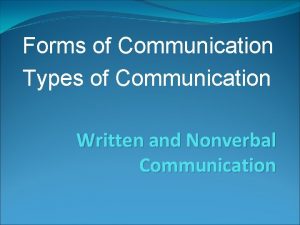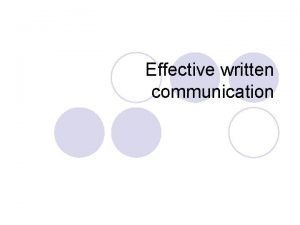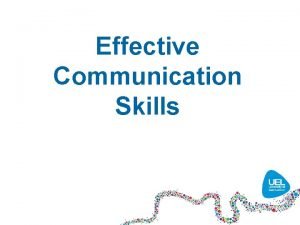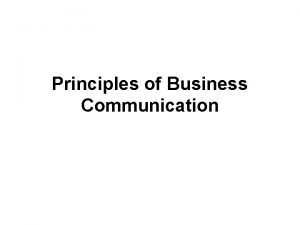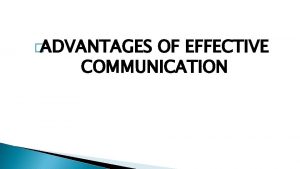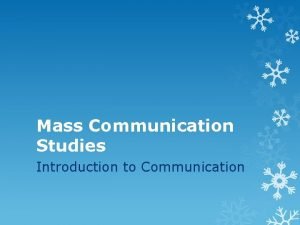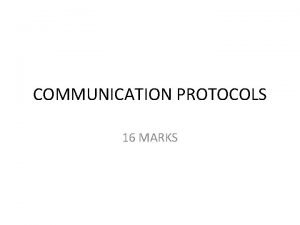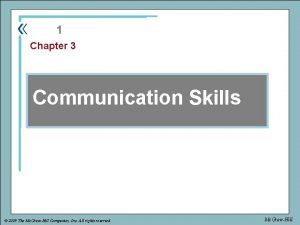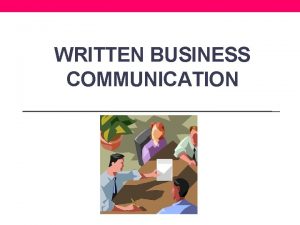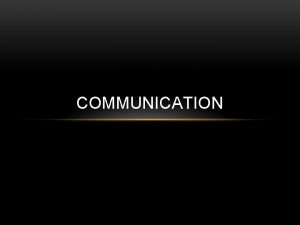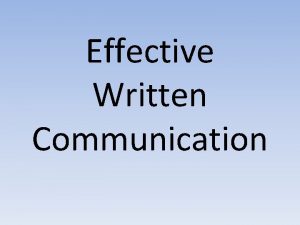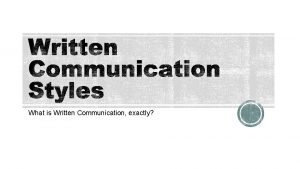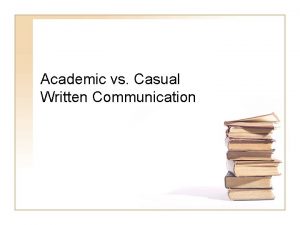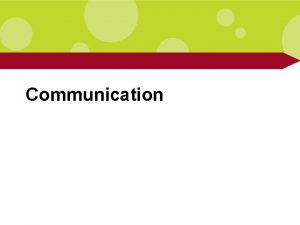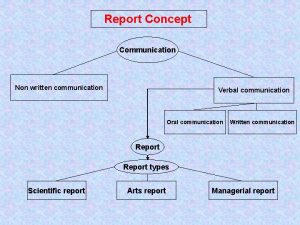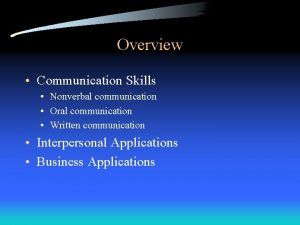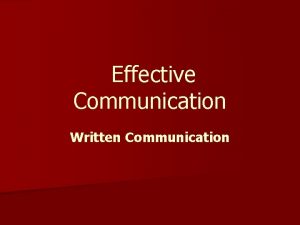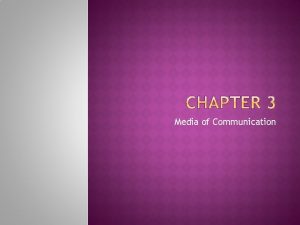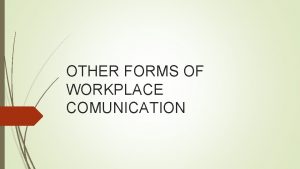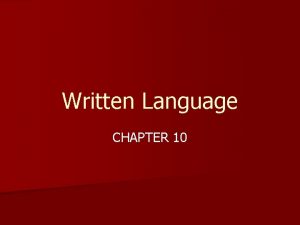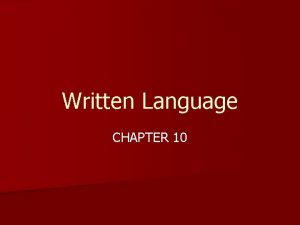Chapter 4 Written Communication Written Communication 4 1


















- Slides: 18

Chapter 4 Written Communication

Written Communication 4 -1 Reading and Writing at Work 4 -2 Business Correspondence 4 -3 Business Reports and Related Documents

4 -1 Reading and Writing at Work Objectives 4 -1 a Identify ways reading and writing are used at work. 4 -1 b Describe and apply ways to improve reading skills. 4 -1 c Describe and apply ways to improve writing skills.

Key Terms • • • wizard bookmark editor draft comprehension vocabulary context concise audience

Written Communication at Work • Reading at Work – Understanding Instructions • A wizard is a software feature that gives the user dialog boxes with instructions for completing a task. – Responding to Inquiries – Using Written References/Databases • A bookmark is a link to a website stored for quick access. • Writing at Work – Reviewing the Writing of Others • An editor is a person who reviews written messages to suggest changes in wording, organization, and content. – Composing Messages

Improving Reading Skills • Comprehension and Vocabulary – Comprehension is the ability to understand what you have read, seen, or heard. – Vocabulary consists of words you know and understand how to use. – Context refers to the parts of a sentence or paragraph around a word that can help you determine its meaning. • Speed • Reading as a Single Process

Improving Writing Skills • Characteristics of Effective Writing – Concise refers to being brief while including all needed information. • Management of Writing Tasks – Managing the Task of Writing • The audience is the recipient(s) for whom the message is intended. – Managing the Schedule for Writing Tasks

4 -2 Business Correspondence Objectives 4 -2 a Describe and apply steps for preparing effective business documents. 4 -2 b Describe and create effective business correspondence. 4 -2 c Apply guidelines for preparing documents using desktop publishing.

Key Terms • • • tone direct approach indirect approach revising proofreading protocol spam font resolution white space

Preparing Effective Documents • Drafting – Purpose – Audience – Message • Tone is a style or manner of writing or speaking that shows a certain attitude. – Direct Approach • Direct approach is a style of writing in which the main point is stated early in the message. – Indirect Approach • Indirect approach is a style of writing that gives reasons or details to support a main point that comes later in the message. – Response

Preparing Effective Documents (continued) • Revising and Editing – Revising is making changes to refine a written message. – Proofreading is checking a document carefully for errors and mechanical issues.

Preparing Business Correspondence • Business Letters – Presentation of Business Letters – Letter Parts • Protocol refers to generally accepted customs or rules. – Business Letter Formats – Envelopes • Memos • Email – Email Addresses – Email Features – Email Guidelines • Spam refers to electronic junk mail, advertisements, or other unrequested information.

Desktop Publishing • Resolution – Resolution is the number of dots per inch (dpi) in a printed document. • Desktop Publishing Guidelines – White space refers to the area on a printed page that is empty, having no text or images.

4 -3 Business Reports and Related Documents Objectives 4 -3 a Describe types of business reports. 4 -3 b Prepare reports in formal and informal formats. 4 -3 c Create visual aids used in reports.

Key Terms • • • analytical optical character recognition (OCR) speech recognition software passive voice pagination footer header documentation table graph

Types of Business Reports • Informational Reports • Analytical Reports – Analytical means involving detailed study. – Gathering Data • Optical character recognition (OCR) refers to scanning text printed on paper and translating the images into words. • Speech recognition software programs that allow voice input, also called voice recognition. – Researching Information Online – Writing the Report • Passive voice is a style of writing in which the subject is acted upon rather than performing the action. – Distributing or Posting Reports

Business Report Formats • Formal Business Reports – Report Pagination • Pagination is the process of dividing a document into individual pages for printing. – Report Headings – Report Documentation • Documentation refers to information about the sources of data used in a report. • Memo Reports

Visual Aids • Tables – Table is data arranged in a format of rows and columns. • Graphs – A graph is a picture that represents data.
 What is oral communication and written communication
What is oral communication and written communication Meaning of oral communication
Meaning of oral communication Writtencommunication
Writtencommunication Characteristics of a good report
Characteristics of a good report Written communication in healthcare
Written communication in healthcare Types of written communication
Types of written communication Informal writting
Informal writting Effective written communication
Effective written communication Written communication skills
Written communication skills Written communication skills
Written communication skills What are the principles of business communication
What are the principles of business communication Advantages of communication
Advantages of communication Example of written communication
Example of written communication Parallel vs serial communication
Parallel vs serial communication Serial and parallel communication
Serial and parallel communication What is mass communication
What is mass communication Serial communication vs parallel communication
Serial communication vs parallel communication Chapter 3 communication skills
Chapter 3 communication skills Chapter 6 interpersonal communication
Chapter 6 interpersonal communication





